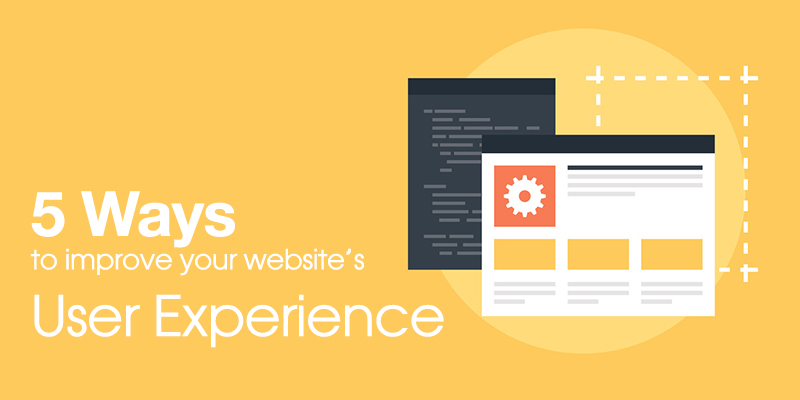Our blog
5 Ways To Improve Your Website User Experience

A poor user experience is one of the number one reasons for visitors to abandon a website. Web users typically have a relatively short attention span, and particularly because there is so much competition in the online marketplace, they usually have plenty of other places to turn if they find that your website performs poorly or delivers a sub-par user experience. If your bounce rate is higher than around forty percent, then you are probably doing something wrong, and now is a good time to audit your website for performance and user experience. Be sure to look out for the following in particular:
Optimize Performance
According to Akamai Technologies, four seconds is about the threshold when it comes to page response times on retail websites. In other words, if your website doesn’t load up within this rather short time span, you’ll likely be driving away a large number of your visitors. Of course, page loading times also depend a great deal on the visitor’s Internet connection, but there are many things you can do to optimise performance on your end, including going for an excellent business Web-hosting package, optimising on-site images and making sure that your underlying code is perfectly clean. If like most modern retail websites, you’re using a content management system, ensure that it is up-to-date and that you are using an optimised, low-footprint theme.
Provide Intuitive Navigation
While every business wants their website to look unique and branded, it is essential that you never sacrifice usability in the name of aesthetics and take care when daring to try something new. The visitor should never have to take more than a few moments to learn how to use your website, and for this reason, it is wise to stick to tried-and-tested responsive navigation practices that also work well on mobile devices. Premium HTML templates and WordPress Themes could be a great source if you have problems designing your own navigation. Always provide a solid search function, and when using icons, makes sure that they actually represent their associated functions in an intuitive way that is not likely to be confusing to your visitors.
Enhance Readability
While typography provides a great deal of potential for customising and branding your website, it is easy to go overboard to the extent that it distracts visitors and even makes them have a hard time reading your content. For bodies of text, stay on the safe side by sticking to the tried-and-tested norm of plain, easily readable black text on a white or very light-coloured background. It is also wise to use larger font sizes, with 12 to 14 points being optimal for bodies of text and 16 to 20 points being suitable for subheadings. On-site content should also be written in a Web-friendly way, and this tends to favour shorter paragraphs, bulleted or numbered lists and plenty of subheadings.
Don’t Force Visitors to Sign Up
The last thing that most people want to do when browsing the Web is have to sign up to access the majority of the content of your website or an online store. Long-winded forms are the bane of the Internet, and when providing an option for visitors or customers to sign up, only ask them for the most important information in order to keep sign-up forms down to a minimal number of input boxes. People will quickly lose patience if they find that they have to fill in a survey just to make a purchase, and it is exactly this kind of problem that causes many people to abandon their digital shopping carts.
Go Easy on the Ads
If you’re running a retail website, then you are probably already familiar with the importance of upselling. However, done incorrectly, upselling is also another major cause of shopping cart abandonment. People want to be able to shop online in peace, without being interrupted by popups and other distracting advertisements as they browse through a website or complete a purchase. Instead of using such methods, try upselling products by suggesting relevant items based on past user activity to the side of the page or anywhere else where it does not get in the way of the user experience.
Conclusion
The above points describe five of the most common website annoyances, particularly in the case of retail websites. However, you should also remember that the content of your website is every bit as important as user experience, and a great retail website should always focus on product benefits, bite-size chunks of useful information and plenty of visuals where appropriate.
